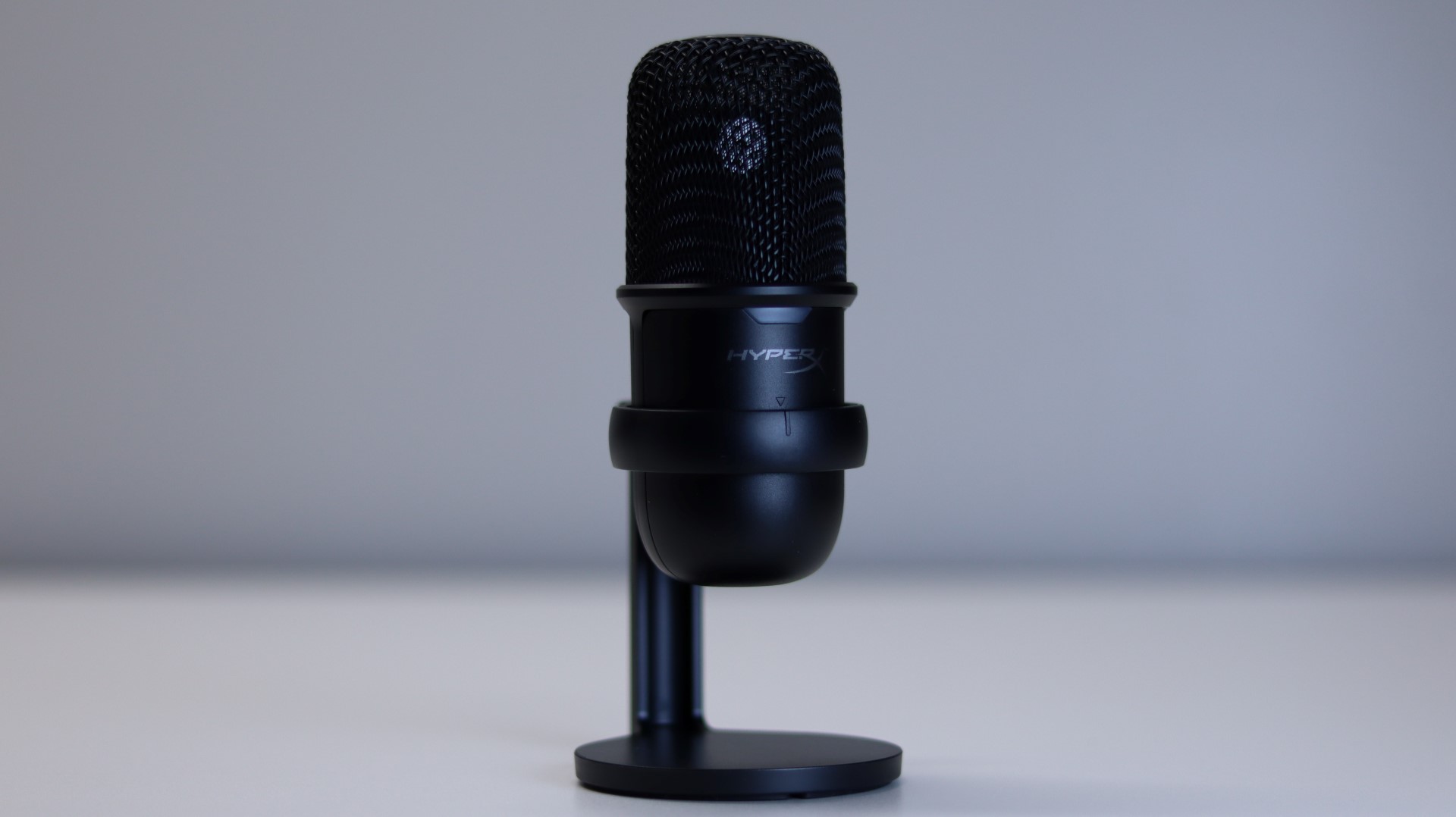HyperX SoloCast Overview
The first thing I noticed once the SoloCast was out of the box was just how hefty it was. Though compact in size, with a microphone body at just over 5″ in height, there is nothing that feels weak about this microphone.
The whole upper half of the microphone body is made up of a woven metal mesh that provides a sturdy protective cage around the pickup inside.
Adding more weight and stability to the body is a solid ring that wraps around the microphone body and then extends down the sides of the body, coming together in a dual-threaded and integrated microphone arm mount. These threads support both 3/8″ and 5/8″ setups.
Making up the lower half of the microphone body are two plastic shells – front and back. The front portion is adorned with a small HyperX logo, and a translucent LED bar above it that glows when the microphone is unmuted – a great indicator that provides a quick visual as to the status of the microphone. Just below the HyperX logo is a small triangle that is used to center the microphone in the included stand.
Out back is a Type-C port, and a few molded portions that keep the microphone from twisting more than a few degrees in the stand. Not to be found is any type of monitoring port like we have seen on the QuadCast models, but the addition of that feature would have most likely bumped the price for the SoloCast out of the range HyperX was looking for.
On the top of the microphone is a quarter-sized, touch-sensitive pad that is used to mute and unmute the microphone, just like the QuadCast before it. Using this pad will also turn the front LED indicator off and on. This was probably my favorite feature of the QuadCast, and I was very happy to see it on the SoloCast.
The plastic desk stand included with the SoloCast is quite plain looking, but actually comes with a few handy features.
First up is the plastic ring that the microphone slides into. The ring’s interior is lined with multiple notches that pair up with the molded portions of the back of the microphone body to provide a bit of rotation to get just the right alignment for your use. Additionally, the ring itself swivels 90 degrees clockwise and counter-clockwise to add an additional layer of positional options. A small adjustment knob is also present where the ring attaches to the base itself, which allows the microphone to tilt back about 45 degrees. Giving the base a bit of weight is a circular insert on the bottom of the stand, which is surrounded by a few rubber pads to keep the SoloCast from sliding around your desk surface.










